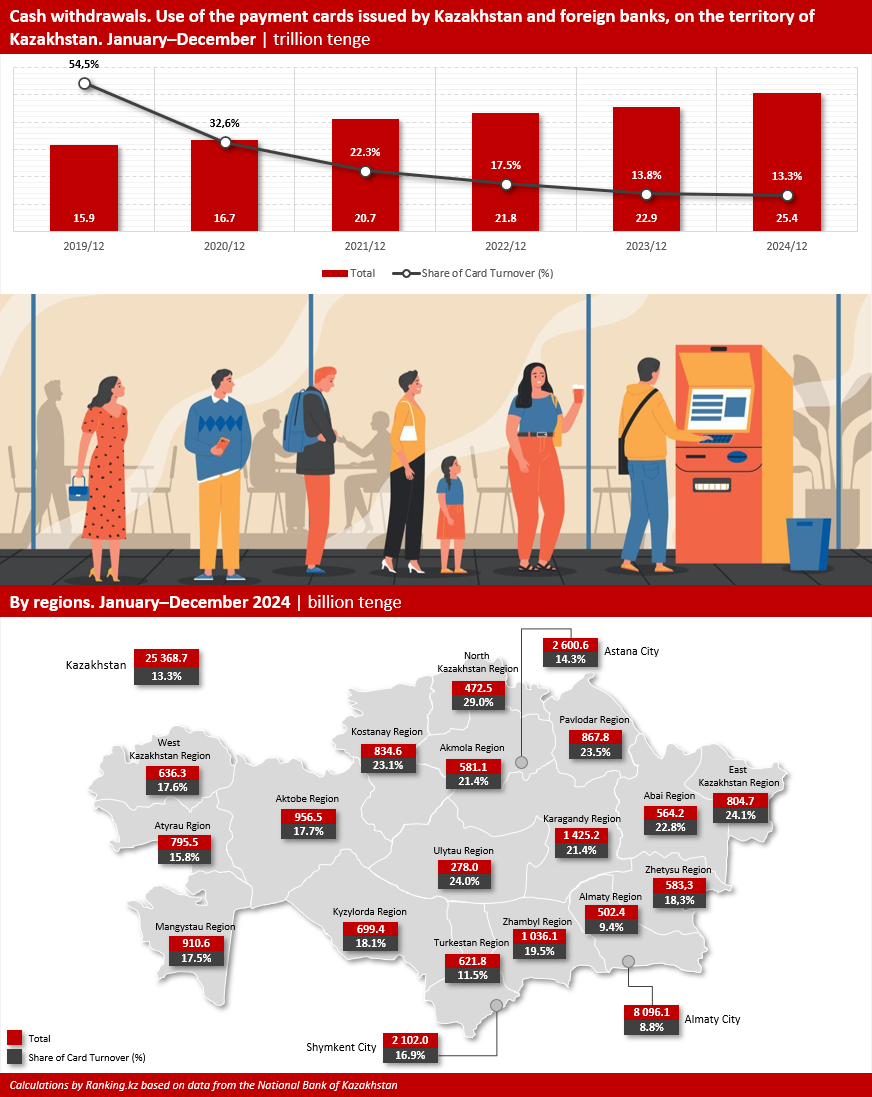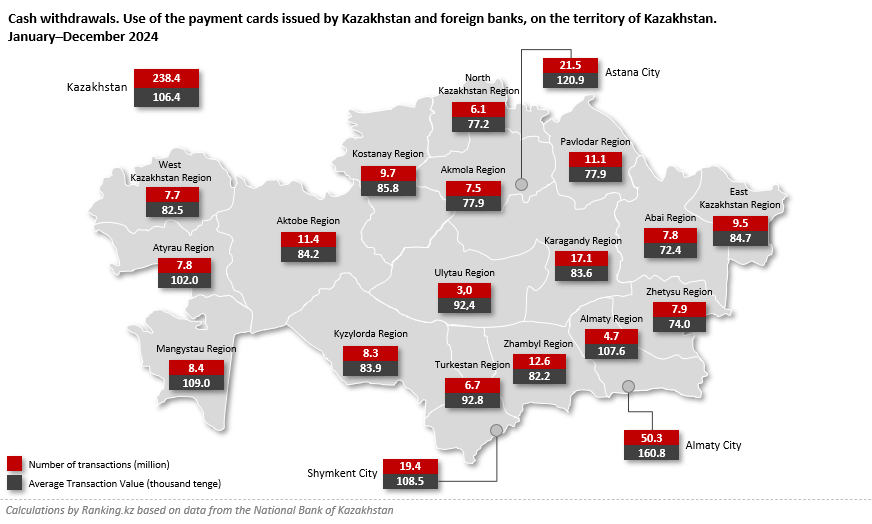In January–December 2024, the volume of cash withdrawals in Kazakhstan using payment cards issued by domestic and foreign banks reached 25.4 trillion KZT — 10.9% higher than the same period in 2023. Previously, growth was twice as slow, at 5% in 2023 and 5.3% in 2022.
For context: Over five years, cash withdrawal volumes have increased by 59.4%, averaging 10% annual growth. More details are presented in the chart.
Notably, despite a general global trend towards cashless transactions, in 2024, the share of cash withdrawals within total card turnover virtually stayed the same for the first time. Let's examine specific figures: in 2021, cash withdrawals accounted for 22.3% of total card turnover; in 2022, the share was 17.5%, and in 2023 it was only 13.8%, so there was a consistent year-on-year displacement of cash transactions by cashless methods. Yet, in 2024, it was 13.3%, only marginally lower than the previous year.
Various factors might explain why the share of cashless transactions stopped growing. For example, increased monitoring of bank transfers among individuals led to a rise in the proportion of cash withdrawals at the beginning of 2024. Additionally, accelerating inflation and increased consumer spending may have further stimulated demand for cash.
The trend toward digitalization in Kazakhstan could slow further this year. The government is considering raising the value-added tax (VAT) rate from 12% to 20%, while reducing the VAT threshold from 78 million KZT to 15 million KZT. Businesses operating officially would thus have to increase their prices, risking reduced competitiveness. Small businesses may even move to the informal sector. Ultimately, this could reduce visible "white" cashless turnover, prompting a return to the old practice of "under-the-table payments."

Returning to the data, in regional terms, the share of cash withdrawals in total card turnover across Kazakhstan in January–December 2024 varied from 8.8% to 29%. The lowest percentages were recorded in Almaty City (8.8%), Almaty Region (9.4%), and Turkestan Region (11.5%).
The highest cash withdrawal shares were observed in North Kazakhstan Region (29%), East Kazakhstan Region (24.1%), and Ulytau Region (24%).
In terms of total cash withdrawal volumes, major cities led: Almaty City (8.1 trillion KZT), Astana City (2.6 trillion KZT), and Shymkent City (2.1 trillion KZT). The average transaction values in these cities were also among the highest nationwide: 160.8 thousand KZT in Almaty City, 120.9 thousand KZT in Astana City, and 108.5 thousand KZT in Shymkent City, compared to the national average of 106.4 thousand KZT. This likely indicates higher income levels, greater banking infrastructure availability, and a tendency to withdraw cash less frequently but in larger amounts.

Karaganda and Zhambyl Regions also saw significant cash withdrawal volumes: 1.4 trillion and 1 trillion KZT, respectively, with average transaction values of 83.6 thousand and 82.2 thousand KZT.
The smallest average transaction was recorded in Abai Region (72.4 thousand KZT), followed by Zhetysu and North Kazakhstan Regions (74 thousand and 77.2 thousand KZT, respectively), and Akmola and Pavlodar Regions (both at 77.9 thousand KZT).


